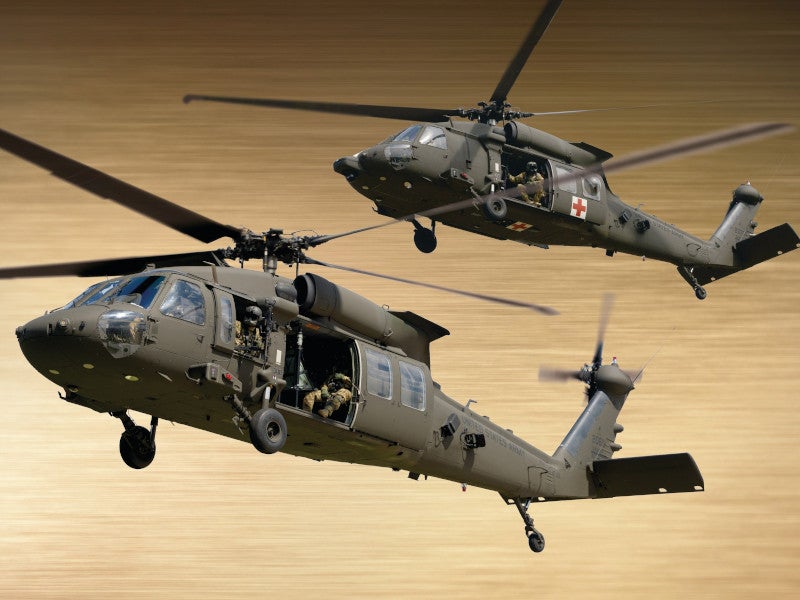The UH-60 Helicopter: Navigating Through Its Background, Style, and Considerable Role in Aeronautics
The UH-60 helicopter, usually described as the Black Hawk, stands as a testimony to the improvements in air travel innovation and its indisputable effect on both civilian and military procedures. From its humble starts to its present status as a symbol of integrity and convenience, the development of the UH-60 has actually been noted by continual innovation and adaptation to meet the progressing requirements of the aeronautics sector. As we look into its background, design ins and outs, and the critical duty it plays in numerous fields, a much deeper admiration for this legendary helicopter arises, clarifying the considerable contributions it has made to the realm of aviation.
Development of the UH-60 Helicopter

The advancement of the UH-60 helicopter can be traced back to the demand for a flexible and reputable utility aircraft that can meet the requiring demands of contemporary military operations. Created by Sikorsky Aircraft, the UH-60 Black Hawk first flew in 1974, with the U.S. Military becoming its primary operator. Over the years, the UH-60 has actually undertaken a number of upgrades and variants to improve its capabilities and efficiency.

Design Developments and Attributes

Additionally, the UH-60 features a sophisticated avionics collection that consists of sophisticated navigation systems, communication equipment, and digital displays. These technological advancements enhance situational recognition for the staff, improving general goal efficiency and safety and security. The helicopter's sizable cabin layout promotes very easy and quick loading and dumping of troops, equipment, and casualties, making it a flexible asset for military operations and calamity alleviation initiatives.
In addition, the unification of composite materials in crucial architectural elements minimizes weight while keeping resilience, raising the UH-60's performance and fuel effectiveness. The UH-60 helicopter's cutting-edge design elements jointly contribute to its track record as a dependable and highly qualified aircraft in both armed forces and private aviation sectors.
Military and Noncombatant Applications
With functional abilities fit for an array of visite site functional needs, the UH-60 helicopter offers both army and civilian industries successfully (uh-60). In military applications, the UH-60, commonly understood as the Black Hawk, plays an essential duty in army transport, clinical discharge, combat support, and search and rescue goals. Its dexterity, capability, and speed to run in different atmospheres make it a valuable possession for military procedures worldwide. The UH-60's advanced avionics, defensive systems, and adaptability have actually solidified its setting as a cornerstone of army helicopter fleets.
In addition, the UH-60's adaptability for VIP transport and overseas operations additionally highlight its relevance in civilian applications. Whether in civilian or military use, the UH-60 helicopter proceeds to prove its worth as a flexible and important aerial platform.
Effect On Air Travel Workflow
Having actually developed its significance in armed forces and private applications, the UH-60 helicopter's impact on air travel operations expands beyond its versatile capacities to affect a broad variety of aerial objectives. In armed forces settings, the UH-60 plays an important duty in army transport, rescue and search operations, medical evacuation, and unique operations support.
In addition, the UH-60's reliability and endurance make it a preferred selection for energy missions, including transport of freight and personnel to remote areas. On the whole, the UH-60 helicopter considerably affects aeronautics procedures by supplying unequaled capabilities and assistance across a wide spectrum of goals.
Future Advancements and Prospects
The evolution of the UH-60 helicopter is positioned to transform aeronautics capacities and improve functional standards in the coming years. Developments in modern technology and style are driving the advancement of next-generation UH-60 variations that assure enhanced goal, dexterity, and speed flexibility. One key location of emphasis for future UH-60 designs is improving self-governing capabilities to boost operational effectiveness and security. By including advanced self-governing trip systems, the UH-60 can lower pilot work, allow complicated objectives in challenging environments, and improve overall objective effectiveness.
Additionally, there is an expanding emphasis on sustainability and fuel effectiveness in the design of future UH-60 helicopters (uh-60). Producers are checking out new materials, propulsion systems, and wind resistant enhancements to minimize environmental effect and operating costs. These advancements not only profit the atmosphere however likewise add to the lasting feasibility and competitiveness of the UH-60 in the quickly developing aviation market
Final Thought

The UH-60 helicopter, commonly referred to as the Black Hawk, stands as a testimony to the innovations in aviation innovation and its undeniable influence on both armed forces and private operations.Having established its relevance in army and civilian applications, the UH-60 helicopter's influence on air travel operations expands beyond its flexible capacities to influence a broad variety of airborne objectives. Overall, the UH-60 helicopter considerably impacts aviation procedures by providing unrivaled capabilities and support throughout a broad range of goals.
The advancement of the UH-60 helicopter is positioned to change aeronautics capacities and reshape functional paradigms in the coming years. As innovation continues to advance, the future growths and prospects for the UH-60 helicopter stay appealing, ensuring its ongoing relevance in the area of aviation.